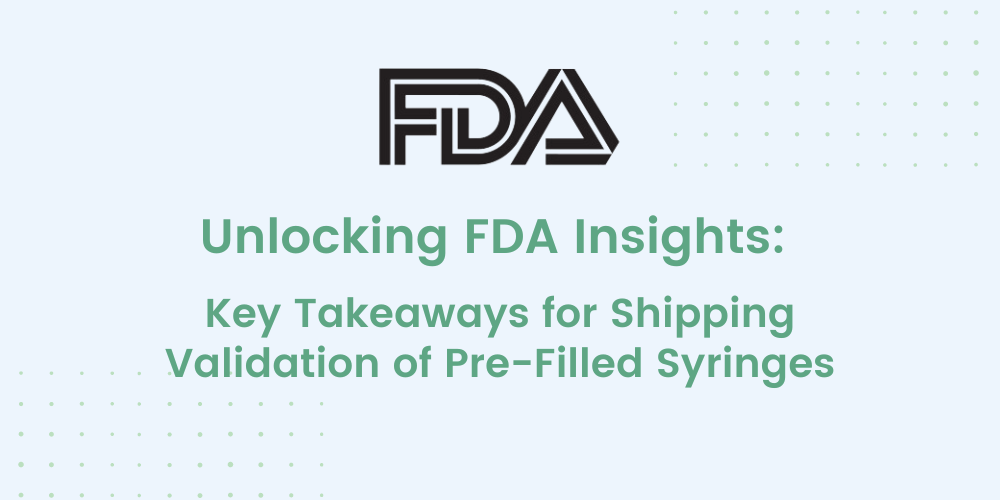Empowering Functional VPs: Strategic Guidance for Sustainable Cold Chain Success
In the highly regulated and complex world of biopharmaceutical drug products, ensuring the integrity...
read Details

Documentation strategy for your cold chain management validation practices has evolved over the last several years. The FDA and other regulatory agencies are requesting more and more specific information to support the filing to confirm the impact to drug product during transport, and the effect transportation hazards have on efficacy and shelf life. An overall strategy of providing documentation in the Biologic License Application (BLA) at time of filing has evolved to provide a rolling review of the stability data, verification studies, packaging qualification and process validation activities in the BLA to support the accelerated approval pathways now available. Data that has not been submitted and reviewed in the BLA is more difficult to use as justification for temperature ranges set outside of labelled storage conditions or justification for drug product release after excursions in distribution outside of labelled storage conditions.
Documentation for sections 3.2.P.3.5 Process Validation as it pertains to distribution and cold chain activities should include the following elements:
Primary packaging – container closure integrity, sterile barrier, physical integrity, and leachables and extractables after agitation
Secondary packaging – physical integrity and label legibility
Thermal packaging – physical integrity and thermal control after physical integrity testing
The BLA submission is the opportunity to show the thermal packaging qualification strategy and drug product quality validation supported with analytical analysis of chemical and physical stability. The Pre-Approval Inspection (PAI) process is the opportunity to show process controls with performance qualification of your representative shipping lanes. The focus at the PAI is to review the validation master plan documentation to show the proper process controls are in place to confirm the product quality limits demonstrated in the BLA are achievable. The focus in the PAI should be in two key areas:
A medicinal product can take a variety of paths from the manufacturer to the patient. In some instances, a drug product can route directly to the patient. In others, there are a series of lanes in the distribution chain where the drug product may be subject to variable environments. Principles of process validation (including design, operational and performance qualifications) can be applied with good distribution practices (GDPs) to confirm portions of the supply chain are validated (excluding unforeseen transport events and the impact of extreme weather conditions).
Your implementation strategy for preparing for BLA submission and the subsequent PAI should be well- defined and understood by all key stakeholders in the cold chain as quickly as possible. Your approach should be documented in a validation master plan. Some keys to success to consider are:
A validation master plan for distribution for each drug product can align the disparate activities already completed into a comprehensive and cohesive approach to distribution process validation. The validation master plan gives an opportunity to discuss risks and mitigation strategies, qualification approach, validation approach, and monitors and controls. Sections can include discussion on warehousing and storage, product transportation, shipping configurations, methods of temperature control, and packaging.
Shipping studies must include both physical packaging integrity and drug product quality. Any proposed shipping qualification plan that does not include any testing of drug quality post shipping compared to specifications and/or control samples will be challenged. The regulatory agencies are expecting to see some post-shipment drug product studies to confirm quality after transport.
White Paper: Drug Product Formulation Testing with Transport Simulation
In the highly regulated and complex world of biopharmaceutical drug products, ensuring the integrity...
read Details
Are you aware of the open data files published online by the FDA? This...
read Details
10 Common Misconceptions of Cold Chain Validation, as Explained by AI, commentary by Gary...
read Details